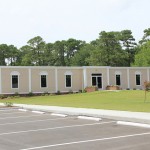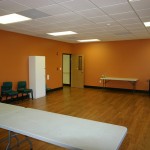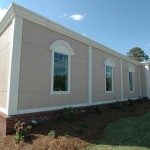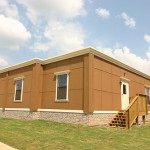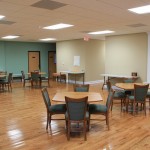The primary benefits of permanent modular construction include:
1) Streamlined construction process (often 50% faster than with conventional construction);
2) Resource efficient – less labor and fewer materials wasted.
3) Reduced environmental impact – less site damage, less material exposure and less waste in landfill.
Commercial modular buildings are non-residential structures, 60% to 90% completed “off-site” in a controlled environment, and transported and assembled at the final building site. This can comprise the entire building or be components or sub-assemblies of larger structures. In many cases, modular contractors work with traditional general contractors to leverage the resources and advantages of each type of construction. The term “modular” describes a construction method or process where individual modules stand alone or are assembled together to make up larger structures. Unlike relocatable buildings, these structures are intended to remain in one location for the duration of their useful life.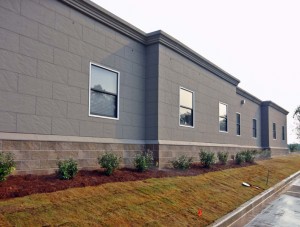
Permanent modular buildings may be Type V (wood frame, combustible) or Type II (steel, concrete, non combustible) and can have as many stories as building codes allow.
Primarily, four stages make up factory-built construction. First, design approval by the end user and any regulating authorities; second, assembly of module components in a controlled environment; third, transportation of modules to a final destination; and fourth, erection of modular units to form a finished building.
Buildings are manufactured at off-site locations. Construction primarily occurs indoors away from harsh weather conditions preventing damage to building materials and allowing builders to work in comfortable conditions.
Unique to modular construction, while modules are being assembled in a factory, site work is occurring at the same time or in some cases prior to construction. This allows for much earlier building occupancy and contributes to a much shorter overall construction period, reducing labor, financing and supervision costs. Saving even more time and money, nearly all design and engineering disciplines are part of the manufacturing process.
Also unique to modular construction is the ability to simultaneously construct a building’s floors, walls, ceilings, rafters, and roofs. During site-built construction, walls cannot be set until floors are in position, and ceilings and rafters cannot be added until walls are erected. On the other hand, with modern modular methods of construction, walls, floors, ceilings, and rafters are all built at the same time, and then brought together in the same factory to form a building. This process often allows modular construction times of half that of conventional, stick-built construction.
These practical time and money saving alternatives to site-built buildings effectively meet the specialized needs of diverse businesses. Customers served by modular construction include federal, state, provincial, and local governments, school boards, corporations, non-profit organizations, retail establishments, health-care providers, as well as individuals, partnerships, and sole proprietorships. Other uses include medical facilities, airport facilities, military installations, restaurants, churches, and remote telecommunications stations.

